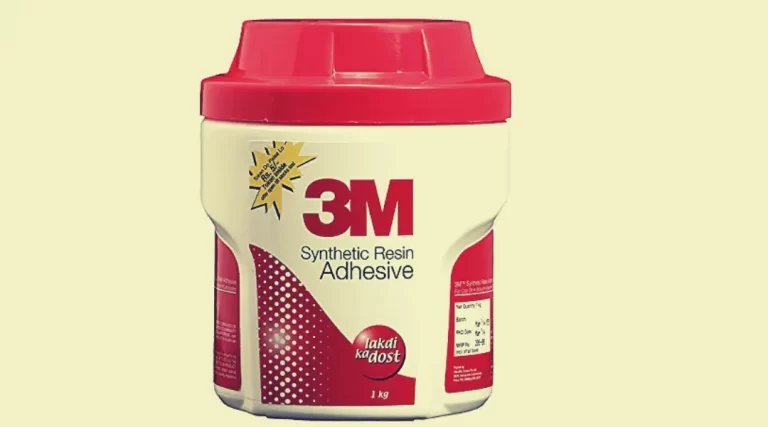Food-grade adhesive is a specialized type of adhesive that is used in the food industry to ensure that food packaging and processing equipment remain safe for consumption. Adhesives that come into contact with food must meet strict safety regulations to prevent contamination and ensure the safety of consumers. As such, food-grade adhesive is a critical component of the food industry, and its importance cannot be overstated.
Let’s dive into this peculiar topic and uncover the taste, health risks, and even unique uses of glue beyond its intended purpose.
In this article, we will explore the definition and regulations of food-grade adhesive, its uses, and the pros and cons of using it. We will also discuss considerations that need to be considered when choosing a food-grade adhesive.
Definition and Regulations of Food-Grade Adhesive

The regulations governing adhesives used in food packaging. Processing facilities are set to ensure that these materials do not pose any health hazards to consumers.
Food-grade adhesive regulations are in place to prevent contamination of food products. With harmful chemicals that may leach from the adhesive materials. Food safety measures must be strictly adhered to in the manufacturing, handling, and storage. These adhesives to prevent any potential harm to human health.
To achieve food-grade adhesive certification, manufacturers must meet industry standards, including the use of approved raw materials and production processes. The certification process involves testing the adhesives to ensure they do not contain toxic chemicals or heavy metals that could harm consumers. Once approved, the adhesives are labeled as food-grade adhesives and can be used in food packaging and processing facilities.
The use of food-grade adhesives is essential to maintaining the integrity of the food system and protecting public health. With that said, let’s delve into the various uses of food-grade adhesives.
Uses of Food-Grade Adhesive
Food-grade adhesives are specialized types of adhesives that are safe for direct or indirect contact with food. They are extensively used in various food processing and packaging applications to ensure the safety and quality of food products. Here are some of the key uses of food-grade adhesives:
Packaging and Labeling
Food-grade adhesives play a crucial role in the packaging industry. They are used to seal and bond different types of food packaging materials, such as paper, cardboard, and plastic. These adhesives create a secure and tamper-resistant seal that prevents contamination and keeps the food products fresh during transportation and storage. Additionally, food-grade adhesives are utilized in affixing labels and stickers on food packaging to provide essential information about the product and its ingredients.
Laminating and Coating
In food processing, laminating is a common technique used to combine various layers of materials to enhance the properties of packaging or create a barrier against moisture, gases, and odors. Food-grade adhesives are employed to laminate films or coatings onto packaging materials, making them more durable, resistant to tearing, and protective against external factors that could degrade food quality.
Assembly of Food Containers and Equipment
Food-grade adhesives are essential in the assembly and manufacturing of food containers and equipment. These adhesives are used to bond different parts of food containers, such as plastic or metal lids to glass jars or composite materials for food storage containers.
Repairing Food Packaging
During transportation or storage, food packaging can sometimes become damaged, compromising the product’s integrity and safety. Food-grade adhesives come to the rescue in such situations, allowing quick and reliable repairs of packaging materials. Without introducing harmful substances into the food.
Direct Food Contact Applications
In certain food manufacturing processes, such as creating confectionery or assembling bakery products. Adhesives may come into direct contact with food. Food-grade adhesives are formulated to be non-toxic and compliant with food safety regulations, making them suitable for use in these specialized applications.
Culinary Arts and Decorations
Food-grade adhesives also find creative applications in the culinary arts. Chefs and bakers may use them to assemble elaborate food decorations. Such as gingerbread houses, cake structures, or decorative displays for buffets and events.
Food Safety Labels and Seals
Food-grade adhesives are employed in the production of safety labels and seals that are applied to food packages to indicate product freshness, authenticity, or if the package has been tampered with. These labels and seals assure consumers of the product’s quality and safety.
Overall, food-grade adhesives play a vital role in the food industry by ensuring that food packaging, processing, and equipment meet stringent safety standards while keeping food products secure and preserving their quality.
Pros of Using Food-Grade Adhesive
Food-grade adhesives offer numerous advantages in various food processing and packaging applications due to their specialized formulation and compliance with food safety regulations. Here are some of the key pros of using food-grade adhesives:
Safety and Non-Toxicity
One of the most significant benefits of food-grade adhesives is their safety from direct or indirect contact with food. These adhesives are specifically formulated to be non-toxic and free from harmful chemicals, ensuring that they do not contaminate the food or pose any health risks to consumers. This characteristic is crucial for maintaining food safety standards and meeting regulatory requirements.
Food Preservation
Food-grade adhesives play a vital role in preserving the freshness and quality of food products. By securely sealing food packaging, these adhesives create a protective barrier against external elements like moisture, air, and contaminants. This helps to extend the shelf life of perishable food items and maintain their taste, texture, and nutritional value.
Tamper-Resistance
In the packaging industry, tamper-resistant seals are essential to protect consumers from potentially unsafe or altered products. Food-grade adhesives provide strong and reliable seals that are difficult to tamper with, ensuring the integrity of the packaged food and enhancing consumer confidence.
Versatility and Compatibility
Food-grade adhesives exhibit versatility in their application, as they can be used with various food packaging materials such as paper, cardboard, plastic, and metal. Additionally, these adhesives are designed to be compatible with different food types, allowing them to be used in a wide range of food processing scenarios.
Regulatory Compliance
Food-grade adhesives are formulated to meet strict regulatory standards set by food safety authorities, such as the U.S. Food and Drug Administration (FDA) and the European Food Safety Authority (EFSA). Using these adhesives ensures that food manufacturers and processors comply with the necessary regulations and avoid potential legal issues.
Adhesion Performance
Food-grade adhesives are engineered to provide excellent adhesion strength and bonding properties. They can withstand varying temperature conditions, resist moisture, and remain stable over time, even in challenging environments like cold storage or high-temperature processing.
Hygienic Application
Maintaining a hygienic environment is crucial during the assembly of food packaging and equipment. Food-grade adhesives are designed to be applied easily and cleanly, without introducing any contaminants into the food processing line.
Sustainable Packaging Solutions
Many food-grade adhesives are formulated to be eco-friendly and promote sustainable packaging practices. As consumer demand for environmentally friendly products increases, using sustainable adhesives becomes an attractive option for food manufacturers looking to improve their ecological footprint.
Culinary Creativity
Beyond food processing and packaging, food-grade adhesives also find applications in culinary arts and creative food presentations. They enable chefs and bakers to construct elaborate and visually appealing food displays, contributing to the overall culinary experience for consumers.
Overall, the use of food-grade adhesives brings several advantages to the food industry, ensuring product safety, preservation, and compliance with food safety regulations while facilitating innovative packaging solutions and culinary creations.
Cons of Using Food-Grade Adhesive
Food-grade adhesives offer significant advantages for the food industry, but they also come with certain limitations and potential drawbacks. It is essential to be aware of these cons to make informed decisions regarding their application:
Limited Bond Strength
Compared to some industrial-grade adhesives, food-grade adhesives may have slightly lower bond strength. This limitation is necessary to ensure that the adhesive remains safe for food contact and does not introduce any harmful substances. As a result, in certain high-stress applications, food-grade adhesives may not provide the same level of durability and longevity.
Temperature and Environmental Constraints
Food-grade adhesives may have temperature limitations that can affect their performance in extreme conditions. Some adhesives may lose their adhesive properties at very high or low temperatures, which could impact the integrity of the food packaging or equipment in specific environments.
Curing Time and Application Constraints
Certain food-grade adhesives may have longer curing times compared to standard adhesives, which can slow down production processes. Manufacturers may need to consider the curing time when planning production schedules. Additionally, some adhesives may have specific application requirements, such as surface preparation or adhesive-to-substrate compatibility, which need to be carefully followed for optimal performance.
Cost Considerations
Food-grade adhesives, due to their specialized formulation and compliance with food safety standards, can be more expensive than regular adhesives. This cost difference can impact the overall production expenses for food manufacturers, especially for high-volume operations.
Storage and Shelf Life
Proper storage conditions are crucial for maintaining the quality and effectiveness of food-grade adhesives. These adhesives may have specific storage requirements, such as temperature and humidity control, to prevent premature curing or degradation. Additionally, their shelf life may be limited, and expired adhesives should not be used to ensure product safety.
Not Suitable for All Applications
While food-grade adhesives are designed for safe food contact, they may not be suitable for all food processing or packaging applications. Certain food products or processes may require specialized adhesives with different properties, and using the wrong type of food-grade adhesive could compromise the overall performance or safety.
Despite these limitations, food-grade adhesives remain a vital and necessary component of the food industry, ensuring the safety and quality of food products during packaging, processing, and transportation. By understanding their constraints and proper application, manufacturers can leverage the benefits of food-grade adhesives while adhering to food safety standards.
Considerations for Choosing Food-Grade Adhesive
Selecting the right food-grade adhesive is crucial for ensuring the safety and quality of food products during packaging and processing. There are several important considerations that manufacturers should take into account when choosing a suitable food-grade adhesive:
Safety and Compliance
The primary consideration for any food-grade adhesive is its safety for direct or indirect contact with food. Manufacturers must ensure that the adhesive complies with relevant food safety regulations, such as those set by the U.S. Food and Drug Administration (FDA) or the European Food Safety Authority (EFSA). Look for adhesives that are specifically labeled as “food-grade” and have relevant certifications.
Application and Substrate Compatibility
Consider the specific application and the types of substrates the adhesive will be in contact with. Different adhesives may have varying compatibility with materials like paper, cardboard, plastic, glass, or metal. Ensure that the selected adhesive forms strong and reliable bonds with the chosen substrates to prevent any potential failures during storage or transportation.
Curing Time and Production Speed
For efficient production processes, consider the curing time of the food-grade adhesive. Some adhesives may have longer curing times, which could slow down production. Manufacturers should choose adhesives that align with their production speed requirements while still providing sufficient bond strength.
Temperature and Environmental Conditions
Evaluate the temperature and environmental conditions that the adhesive will be exposed to during storage, transportation, and usage. Some food-grade adhesives have temperature limitations and may lose their effectiveness at extreme temperatures. Ensure that the chosen adhesive can withstand the intended conditions to maintain packaging integrity and food safety.
Bond Strength and Durability
While safety is critical, the adhesive’s bond strength and durability are also essential factors. Assess the adhesive’s performance under different stress conditions, including temperature fluctuations, humidity, and physical impacts. Choose an adhesive that provides adequate strength and stability to endure the rigors of food packaging and processing.
Packaging Regulations and Industry Standards
Different food products may be subject to specific packaging regulations and industry standards. Ensure that the selected food-grade adhesive aligns with these requirements to avoid compliance issues and potential legal complications.
Cost and Efficiency
Consider the cost-effectiveness of the adhesive. While safety and quality are paramount, finding an adhesive that meets these criteria without significantly increasing production costs can be advantageous. Manufacturers should balance the adhesive’s performance with its cost to make informed decisions.
Storage and Shelf Life
Evaluate the adhesive’s storage requirements and shelf life. Proper storage conditions are essential for maintaining the adhesive’s effectiveness and safety. Longer shelf life can be beneficial, as it allows manufacturers to plan their adhesive inventory more efficiently.
Supplier and Technical Support
Choose reputable suppliers that offer technical support and expertise in food-grade adhesives. Suppliers with a good track record and responsive customer service can provide valuable assistance in selecting the right adhesive for specific applications.
By carefully considering these factors, food manufacturers can choose the most suitable food-grade adhesive for their needs, ensuring product safety, compliance with regulations, and efficient production processes.
Conclusion
The food-grade adhesive is an important and necessary component of the food industry. While it offers many benefits, it is important to consider the potential drawbacks when choosing the right adhesive for a particular application. Ultimately, the safety and quality of the food products that are being produced must be the top priority, and food-grade adhesive is a critical tool in ensuring that these standards are met.
As with any industry, the food industry requires innovation and constant improvement, and the use of food-grade adhesive is a key part of this ongoing process.



